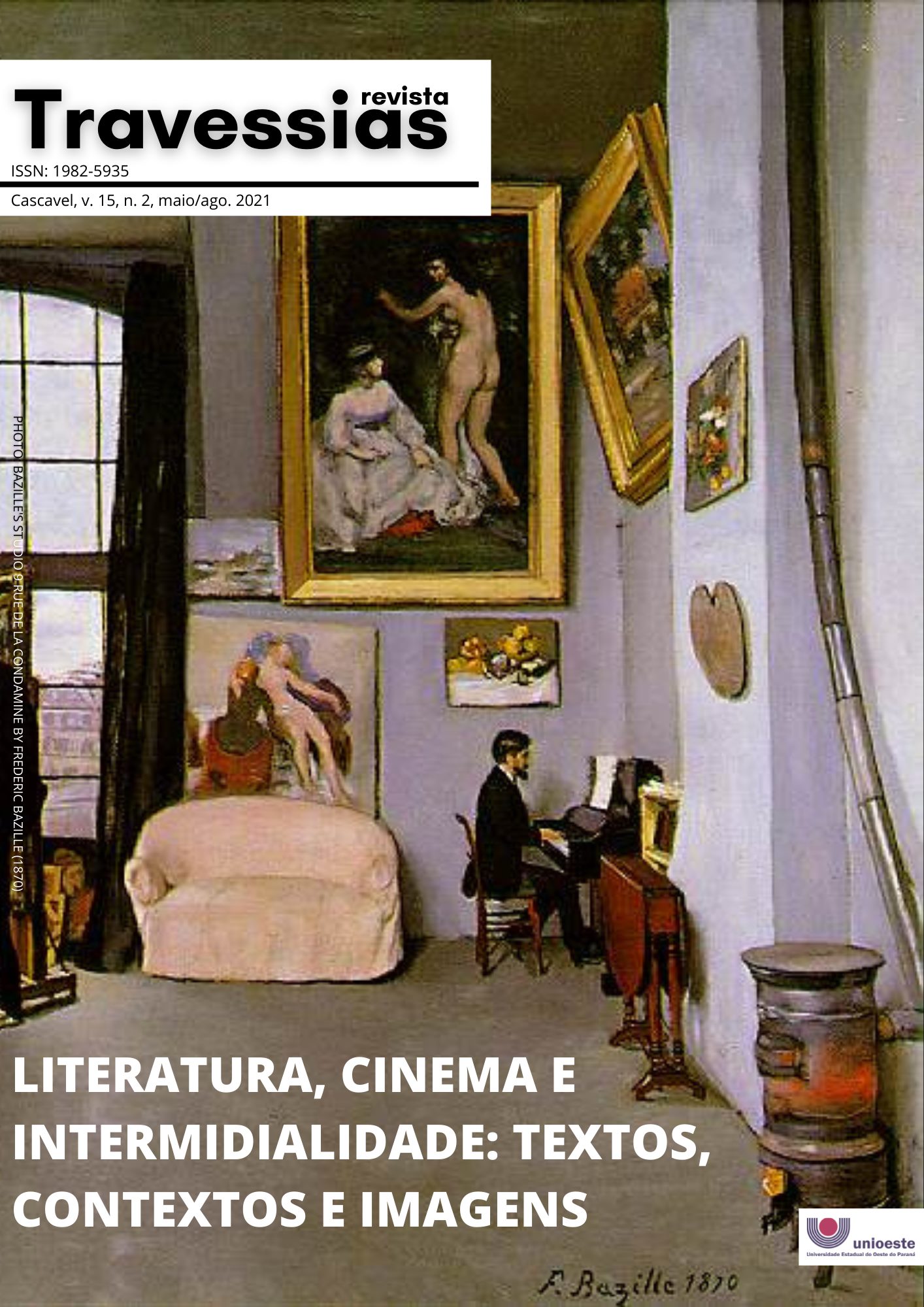A aliança de classes e o nascimento de uma nação em Cerimônia de casamento
DOI:
https://doi.org/10.48075/rt.v15i2.27763Palavras-chave:
Robert Altman, Cerimônia de casamento, ascensão conservadora, anos 1970.Resumo
Este ensaio traz uma análise do filme Cerimônia de casamento (1978) do cineasta Robert Altman, na qual se procura argumentar que os diálogos estabelecidos no filme entre a história do cinema e a literatura produzem uma reflexão sobre a matéria histórica do momento em que o filme foi produzido. Mais especificamente, procura-se demonstrar que o filme faz uma apanhado crítico sobre o ascenso de ideologias conservadoras a partir de meados dos anos 1970.
Downloads
Referências
ALEIXO, Antonio Marcos. Um épico possível: refuncionalizações de técnicas, formas e clichês, em Nashville, de Robert Altman. 2013. 332 f. Tese (Doutorado em Estudos Lingüísticos e Literários em Inglês) – Faculdade de Filosofia, Letras e Ciências Humanas, Universidade de São Paulo, São Paulo, 2013.
BENJAMIN, Walter. Obras escolhidas: Magia e técnica, arte e política. São Paulo: Brasiliense, 1993.
EISENSTEIN, Sergei. A forma do filme. Rio de Janeiro: Jorge Zahar Editor, 1990.
GUNNING, Tom. An Aesthetic of Astonishment: Early Film and the (In)Credulous Spectator. In: WILLIAMS, Linda. (ed.). Viewing Positions: Ways of Seeing Film. New Jersey: Rutgers University Press, 1995.
HASEN, Miriam. Babel and Babylon: Spectatorship in American Silent Film. Cambridge (Mass.) & London: Harvard University Press, 1991.
NICKERSON, Michelle (ed.). Sunbelt Rising. Philadelphia: University of Pennsylvania Press, 2011.
Downloads
Publicado
Como Citar
Edição
Seção
Licença
Aviso de Direito Autoral Creative Commons
Política para Periódicos de Acesso Livre
Autores que publicam nesta revista concordam com os seguintes termos:
1. Autores mantêm os direitos autorais e concedem à revista o direito de primeira publicação, com o trabalho simultaneamente licenciado sob a Licença Creative Commons Attribution que permite o compartilhamento do trabalho com reconhecimento da autoria e publicação inicial nesta revista.
2. Autores têm autorização para assumir contratos adicionais separadamente, para distribuição não-exclusiva da versão do trabalho publicada nesta revista (ex.: publicar em repositório institucional ou como capítulo de livro), com reconhecimento de autoria e publicação inicial nesta revista.
3. Autores têm permissão e são estimulados a publicar e distribuir seu trabalho online (ex.: em repositórios institucionais ou na sua página pessoal) a qualquer ponto antes ou durante o processo editorial, já que isso pode gerar alterações produtivas, bem como aumentar o impacto e a citação do trabalho publicado (Veja O Efeito do Acesso Livre).
Licença Creative Commons
Esta obra está licenciada com uma Licença Creative Commons Atribuição-NãoComercial-CompartilhaIgual 4.0 Internacional, o que permite compartilhar, copiar, distribuir, exibir, reproduzir, a totalidade ou partes desde que não tenha objetivo comercial e sejam citados os autores e a fonte.



